Why overheating shows up at red lights in Winston‑Salem
On I‑40 or US‑421, highway airflow rams through the radiator. At a long light on Stratford Road, your engine relies almost entirely on the radiator fan. In July, Winston‑Salem’s typical daily range is ~71°F to 87°F, which is exactly when a weak or miscommanded fan reveals itself at idle. That idle‑only temperature rise is the calling card for radiator fan repair winston salem rather than a coolant‑only problem. (Weather Spark)
NOAA’s climate‑normals tools confirm sustained summer warmth across Triad stations; combine heat with stop‑and‑go traffic and you have a predictable recipe for overheating in traffic if the fan circuit isn’t healthy. (NCEI)
How modern cooling fans are controlled (relays vs. brushless PWM)
Older systems used brushed motors switched by low/high relays or resistors. Late‑model platforms frequently employ brushless fan drives with electronic commutation and continuous speed control (PWM). The PCM varies duty cycle to command airflow precisely, improving efficiency and noise while protecting the engine and A/C condenser at idle. (Bosch Mobility)
Duty cycle and why a “slow” fan may be commanded slow
A technician scopes the control line and measures duty cycle (and sometimes polarity) while also measuring current draw. If command jumps from 30% to 80% but current stays flat, the module or motor is failing; if duty stays low while temps rise, the issue is upstream in sensors or PCM logic. This is standard practice for variable‑speed fan diagnosis. (picoauto.com)
How A/C head pressure triggers fan speed
Most strategies increase fan speed as A/C condenser pressure rises or as coolant temperature passes thresholds. That’s why a failing fan often shows up first as “A/C warm at lights”, followed by a temperature climb at idle. (Exact thresholds vary by make, but the diagnostic principle is the same.) (picoauto.com)
Symptoms that point to radiator fan repair
- Hot in traffic, fine on the highway. The radiator can’t shed heat without airflow at low speed; a dead or weak fan is a prime suspect. Consumer guidance consistently links broken or non‑operating fans with stop‑and‑go overheating. (CARFAX)
- A/C warm at lights, cold while cruising. Without fan‑forced airflow, condenser pressure spikes and the system derates cooling. (CARFAX)
- Fan never runs with A/C on max. Either the motor/module can’t run or the command signal never arrives. A scan‑tool actuation test plus scope on the control wire sorts this quickly. (picoauto.com)
- Intermittent roar or only high‑speed. Legacy relay systems can stick; brushless modules may default to “emergency” speed. A current‑draw trace distinguishes causes. (picoauto.com)
If you’re seeing these patterns, you’re in radiator fan repair territory—not “top off coolant and hope.”
Our diagnostic workflow for radiator fan repair winston salem
Accurate diagnosis prevents repeat failures and protects the engine. Here’s how our team approaches every radiator fan repair:
Power/ground, fuses, relays, and current draw
We start with high‑amp integrity checks: supply fuses, relay outputs (where used), grounds, and voltage drop across connectors. On brushed motors, elevated current draw points to bearing drag or winding damage; on brushless assemblies, abnormal current vs. command suggests a failing module. (picoauto.com)
Control inputs: ECT, A/C pressure, and PCM commands
Using factory‑level scan tools, we watch coolant temperature (ECT), A/C pressure, and fan command PIDs together. If the PCM commands high fan and the speed doesn’t rise, the fault is in the fan circuit. If the PCM never commands speed despite temperature/pressure, we look for sensor bias or logic inhibition. (picoauto.com)
Brushless PWM testing: signal, module, and motor
For PWM fans we scope the control signal (duty, frequency, polarity), verify module power/ground, and correlate duty cycle with current and coolant temperature. Bosch documents why brushless drives provide robust continuous speed control—and why diagnosing the electronic module matters as much as the motor itself. (Bosch Mobility)
Result: a radiator fan repair winston salem plan that replaces the right part once—fan assembly, module, relay, or sensor—without guesswork.
Common failures—and why parts‑darting wastes money
Fan motor wear or integrated module failure
Brushed motors age into high current and low RPM; brushless designs more often fail at the integrated controller. Without a scope and an ammeter, both can masquerade as each other.
Relay or resistor faults (legacy two‑speed systems)
Heat‑cycled contacts pit, resistors crack, and harness connectors carbonize. Swap‑to‑see isn’t a test; load testing is.
Shroud cracks and seal gaps
A good fan can’t pull air if hot air recirculates around a broken shroud. Visual inspection after minor front‑end hits often finds the real culprit.
Sensor bias
A slightly misreading ECT or A/C pressure transducer delays fan command. Plausibility checks against physical conditions prevent unnecessary replacements.
Harness breaks at tight bends
Copper strands can fracture where the harness enters the fan module. A wiggle test while watching the PWM trace exposes intermittent opens.
Safety risk if ignored
NHTSA recall documents show how stalled or seized cooling fans can overheat the motor and, in rare circumstances, lead to thermal events—a reminder that this is a high‑power electrical device, not just plastic blades. (NHTSA Static)
Preventive steps that actually prevent overheating
- Keep the stack clean. Bugs and debris block the condenser‑radiator sandwich; gentle back‑side rinsing (where accessible) restores airflow. Consumer advisories emphasize the role of airflow in preventing idle‑only overheating. (CARFAX)
- Mind the shroud. Replace broken tabs or missing foam seals that cause hot‑air recirculation at stoplights.
- Listen at idle. New scraping noises or erratic speed surges are evidence a fan is on the way out.
- Electrical health matters. Low system voltage or corroded grounds push brushless controllers into fault behavior.
- Prove it before summer. Do a five‑minute idle test with A/C on MAX. If the fan won’t ramp or A/C warms at lights, schedule radiator fan repair winston salem before the first heat wave. (Weather Spark)
When to book radiator fan repair winston salem (and what the service includes)
If temperature climbs at stoplights or your A/C warms at idle, don’t wait for the gauge to redline—book radiator fan repair winston salem and prevent collateral damage. Our service typically includes:
- Electrical testing: fuses, relays, power/ground, voltage drop, and current draw under load
- Controls validation: ECT and A/C pressure plausibility, scan‑tool actuation, and command correlation
- Brushless PWM analysis: control‑line scope capture (duty/frequency), module supply checks, command‑to‑response verification
- Airflow verification: shroud integrity, debris removal, condenser/radiator inspection
- Post‑repair validation: stabilized coolant temps at idle, A/C vent temps, and fan ramp behavior under defined conditions (picoauto.com)
While your vehicle is already on a bay, it’s efficient to bundle routine items like Oil Change Service or safety checks such as Brake Repair. For vehicles with multiplexed fan control or intermittent electrical faults, loop in our specialists on Auto Electrical. See our full Services, check Makes We Service for your brand, meet the crew on About Us, and lock your visit through Contact Us.
FAQs
1) Why is my car hot only in traffic?
At low road speeds the radiator fan does nearly all the cooling. A weak motor, failed module, or airflow blockage raises temps at idle even when highway temps look normal. (CARFAX)
2) How do you test a brushless fan?
We scope the PWM control line, check module power/ground, and correlate duty cycle with current draw and temperature. That separates a control issue from a failing fan assembly. (picoauto.com)
3) Can a bad fan damage the engine?
Yes. Persistent overheating risks head‑gasket failure; recall documents show stalled fans can overheat motors and, in rare cases, cause thermal damage. (NHTSA Static)
4) My A/C gets warm at stoplights—fan or refrigerant?
Often fan/airflow. The A/C raises condenser heat; if the fan can’t pull air, pressure spikes and cooling falls off. We verify fan command before touching refrigerant. (CARFAX)
5) Do fans really run with the engine off?
Yes. After‑run cooling and heat soak can command operation even with the key off on many models—hands clear of the shroud. (Bosch Mobility)
6) What quick checks can I do myself?
Look for grille debris, damaged shrouds, and blown fuses. If the fan doesn’t run with A/C on MAX at idle, schedule radiator fan repair soon.
7) Can I drive without a working fan in winter?
Risky. Extended idling still needs forced airflow, and many cars rely on the fan to support A/C‑based defogging. Book radiator fan repair rather than gambling with the gauge.
8) What makes your radiator fan repair winston salem service different?
We measure before we replace—oscilloscope captures, current traces, and scan‑tool command checks—so the fix sticks through July heat.
Sources
- Winston‑Salem July climate — WeatherSpark. (Weather Spark)
- NOAA NCEI — U.S. Climate Normals Quick Access. (NCEI)
- Bosch Mobility — Brushless electric cooling fan drives (EC motors). (Bosch Mobility)
- Pico Technology — Variable‑speed cooling fan test (duty cycle & current draw). (picoauto.com)
- PWM/duty‑cycle measurement note — Pico Technology forum. (picotech.com)
- CARFAX — Car Overheating: causes & fixes (role of the fan at idle). (CARFAX)
- NHTSA Recall RMISC‑19V919‑0019 — Engine Cooling Fan. (NHTSA Static)
Ready to stop watching the needle creep? Book radiator fan repair winston salem with a shop that scopes signals—then replaces parts. Start with Services, involve Auto Electrical if modules are in the mix, and lock your appointment on Contact Us.
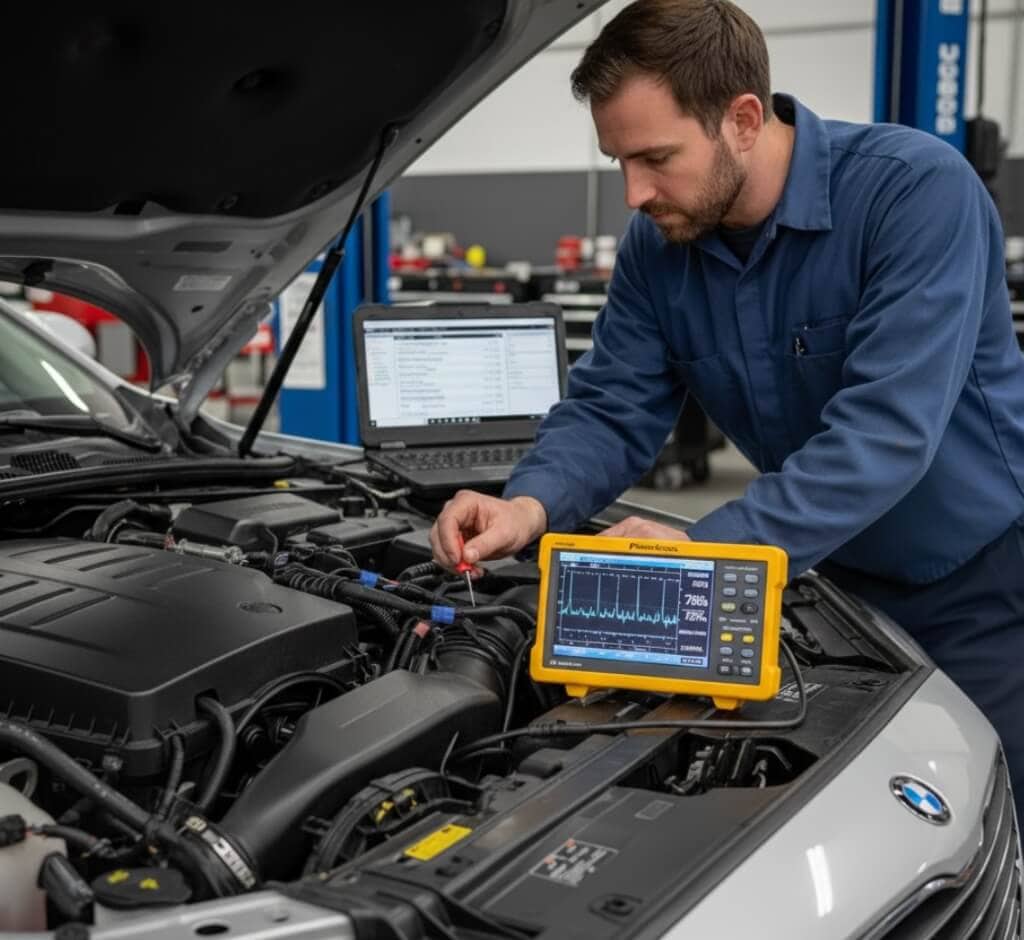
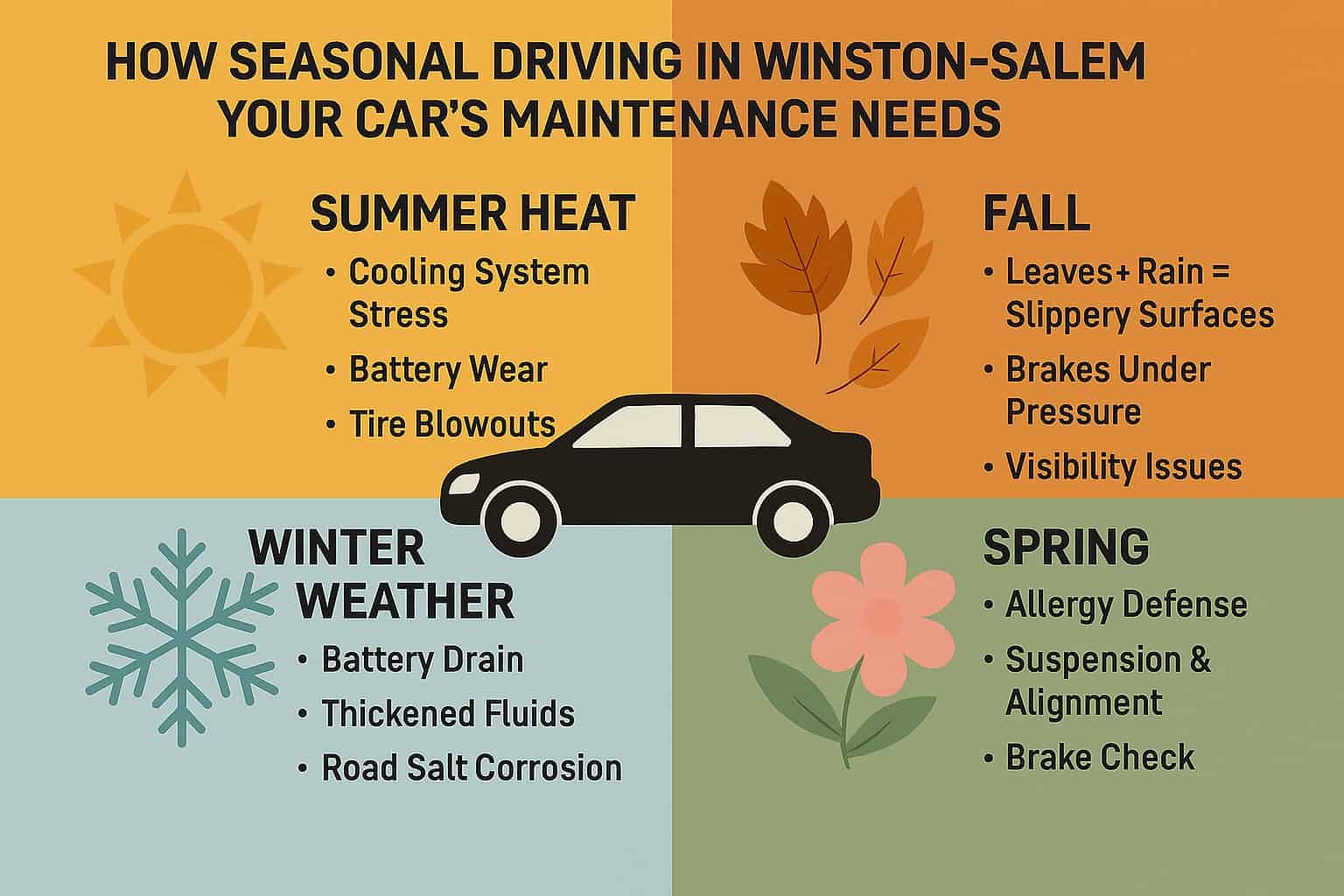
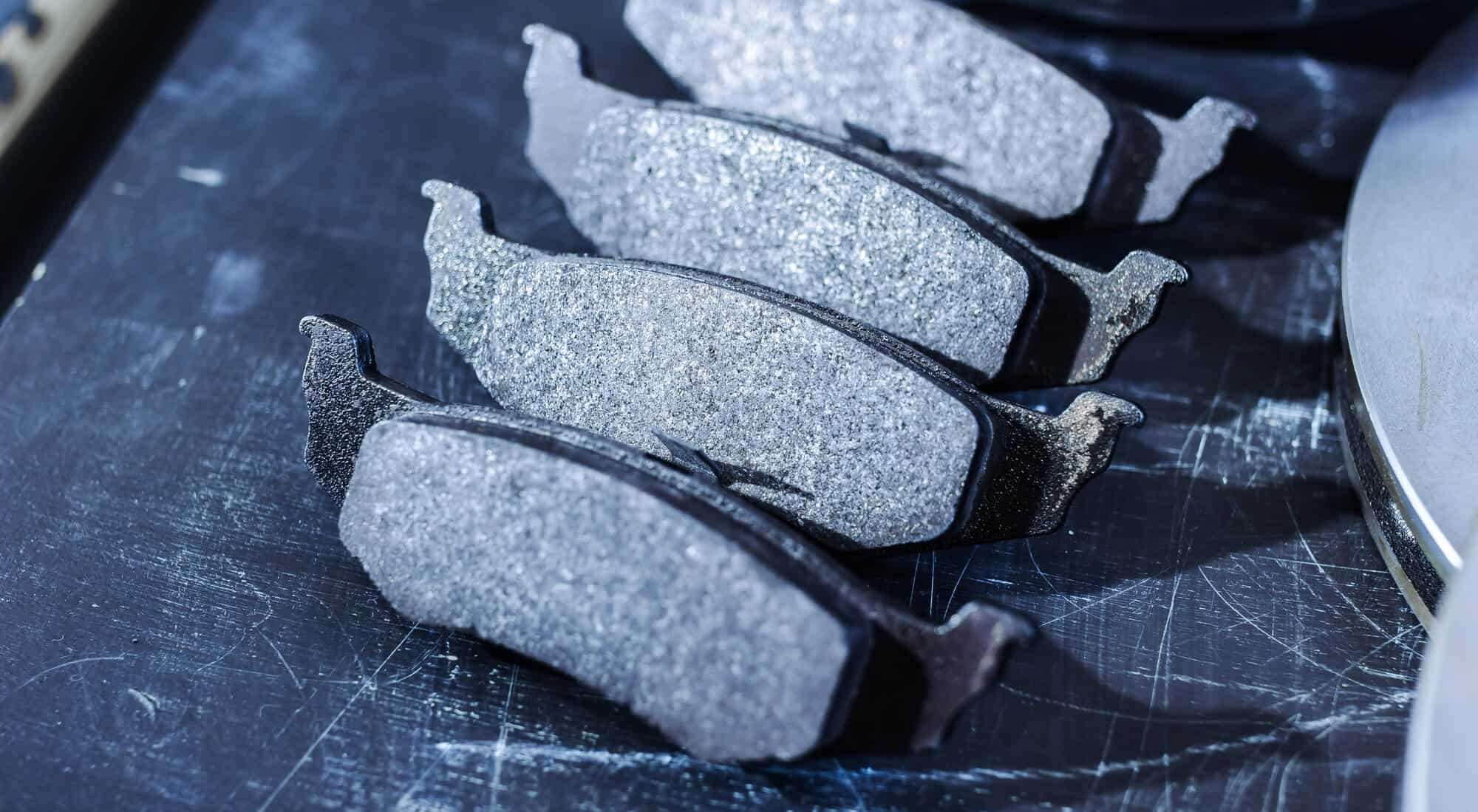





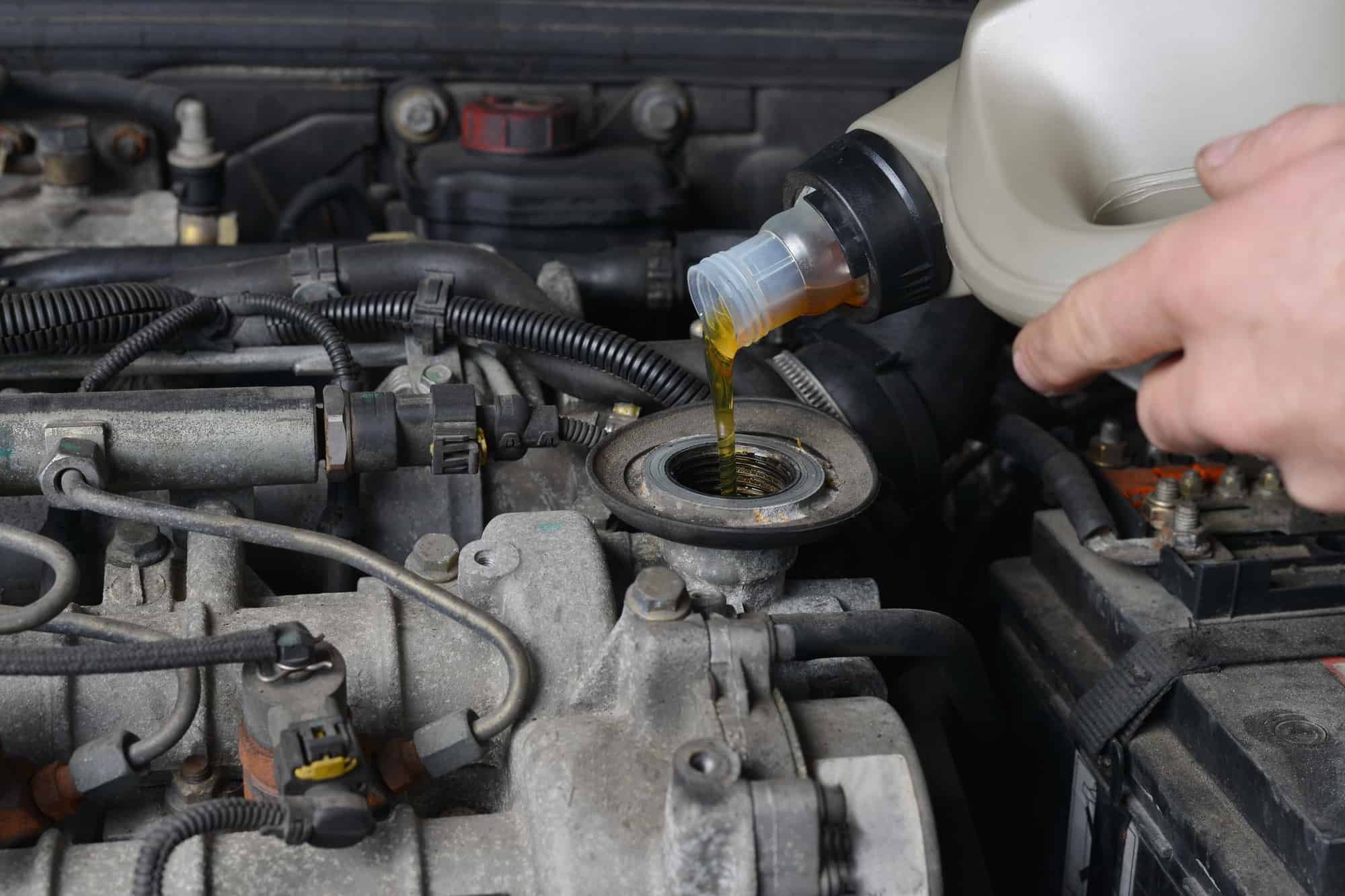
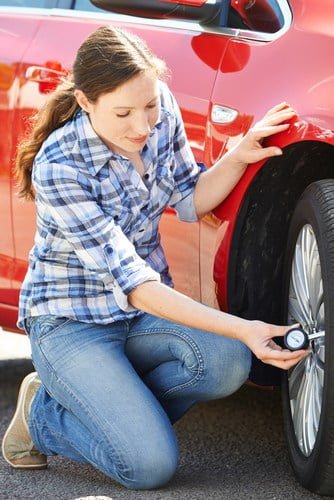
 The tires on your vehicle are critical to its safety as well as its performance. All drivers should know simple tire maintenance. Doing so will keep your tires functioning at their best and will also make them last longer. It will significantly lessen your chances of getting flat tires, skidding, and other tire emergencies.
The tires on your vehicle are critical to its safety as well as its performance. All drivers should know simple tire maintenance. Doing so will keep your tires functioning at their best and will also make them last longer. It will significantly lessen your chances of getting flat tires, skidding, and other tire emergencies.